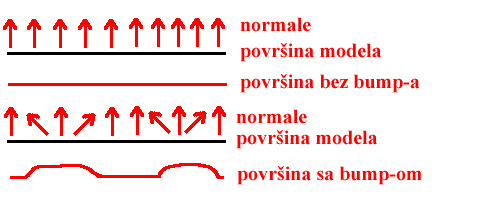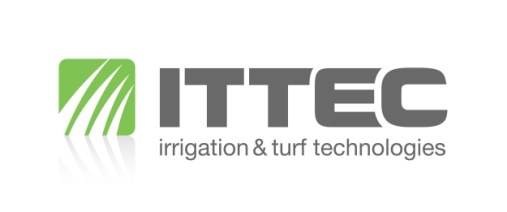DIAGRAM OF THE DIGESTIVE SYSTEM USE THE DIAGRAM ABOVE
26 POLÍMEROS SINTÉTICOS POLÍMEROS SINTÉTICOS DIAGRAMAS TENSIÓNELONGACIÓN PLÁSTICOS VINÍLICOS34 BAB V ENTITY RELATIONSHIP DIAGRAM ( ERD )
6 APUNTE DE COMPILADORES DIAGRAMAS DE TRANSICIONES UNIVERSIDAD DE
6 COMPOSITIONAL PHASE DIAGRAMS USES OF COMPOSITIONAL PHASE DIAGRAMS
8 21 SISTEMA NEURONAL DIAGRAMA BÁSICO DE UNA NEURONA
9 DIAGRAMAS DE FASE EN LA PRESENTE PRÁCTICA SE
Diagram of The Digestive System

Diagram
of The Digestive System
Use the diagram above to fill in the chart:
|
# |
Name |
Description and Function |
|
|
. |
. |
|
1 |
. |
.
|
|
|
. |
. |
|
2 |
. |
.
|
|
|
. |
. |
|
3 |
. |
.
|
|
|
. |
. |
|
4 |
. |
.
|
|
|
. |
. |
|
5 |
. |
.
|
|
|
. |
. |
|
6 |
. |
.
|
|
|
. |
. |
|
7 |
. |
.
|
|
|
. |
. |
|
8 |
. |
.
|
|
|
. |
. |
|
9 |
. |
.
|
|
|
. |
. |
|
10 |
. |
. |
|
|
. |
. |
|
11 |
. |
.
|
|
. |
. |
. |
|
12 |
. |
.
|
|
. |
. |
. |
|
13 |
. |
.
|
|
. |
. |
. |
|
14 |
. |
.
|
|
. |
. |
. |
|
15 |
. |
.
|
Using
the numbers from the diagram above, list, in order, the structures
each mouthful of food or drink passes through on its way through the
digestive process.
Answer Key
|
# |
Name |
Description and Function |
|
|
. |
. |
|
1 |
teeth |
The strongest stuff in the body! Their purpose is to rip, grind, mash and generally pulverize all that food we put into our mouths. |
|
|
. |
. |
|
2 |
epiglottis |
This trap door belongs to both the respiratory system and the digestive systems. Swallowing triggers its closing over the trachea to prevent food and fluids from draining into our lungs. |
|
|
. |
. |
|
3 |
liver |
One of the 'accessory' organs of digestion. Food doesn't actually pass through this organ. Instead, this organ secretes bile that is passed along to the gall bladder for concentration and storage. Bile breaks down fat |
|
|
. |
. |
|
4 |
gall bladder |
Another accessory organ. Food doesn't touch this one, either. It is a pear-shaped sac about 4 inches long and is the reservoir, or storage tank, for bile |
|
|
. |
. |
|
5 |
common bile duct |
As close to a transport highway as we've visited so far. This duct collects donations from the liver and the gall bladder (bile) as it passes along to the duodenum of the small intestine |
|
|
. |
. |
|
6 |
large intestine |
.There are many sections to the large intestine- the appendix, caecum, ascending (rising) colon transverse (across) colon, descending (going down) colon, sigmoid colon, the rectum and the anus. The main purposes of the large intestine is the removal of water, storage and elimination of waste left-overs. As the nutritional fluids are absorbed and transfered out to the bloodstream, the contents get more solid and compact. |
|
|
. |
. |
|
7 |
appendix |
Sometimes a piece of food gets stuck in here (like bubblegum) causing an infection. |
|
|
. |
. |
|
8 |
salivary gland |
3 main salivary glands deliver their juices, saliva, into the mouth. This fluid enzyme helps to soften up the food, and breaks down the carbohydrates (starch) into simple sugars. |
|
|
. |
. |
|
9 |
tongue |
One very strong muscle made for rolling food around your mouth so your teeth can work best. It also houses taste buds; sensors of sweet, sour, salty and bitter tastes |
|
|
. |
. |
|
10 |
esophagus. |
A muscular canal running from the pharynx to the stomach. The tongue pushes a 'bolus' of food into the esophagus to start it on its way to the stomach. Peristalsis is the name used to describe the rhythmic contract and release actions of this muscle and most all others along the digestive tract. |
|
|
. |
. |
|
11 |
stomach |
Mechanical digestion – churning of food. Gastric acids are triggered by the presence of food that 'melt' the food into a thick soup. (Chyme) |
|
|
. |
. |
|
12 |
duodenum |
The
duodenum is the first section of the twenty two foot long small
intestineThe duodenum is
|
|
|
. |
. |
|
13 |
pancreas |
The body's sugar control board. If your blood sugar gets too high, insulin is released to counteract it. If your sugars are low, glucagon is released into the blood stream. Both insulin and glucagon are produced by the pancreas. |
|
|
. |
. |
|
14 |
small intestine |
The small intestine has 3 main sections: the duodenum, jejunum and ileum. The duodenum is responsible for continuing to break down of food into liquid form and the jejunum and ileum mainly responsible for absorption of nutrients into the bloodstream. |
|
|
. |
. |
|
15 |
rectum |
The last portion of the large intestine used for storage of stool ready for disposal. |
A DIAGRAMMATIC APPROACH TO PEIRCE’S CLASSIFICATIONS OF SIGNS1 PRISCILA
A PCK FELÉPÍTÉSÉNEK LOGIKAI ÁBRÁJA (BLOKKDIAGRAM) NÉHÁNY PÉLDA AZ
A RESOLVER LA SUMA DE DOS NÚMEROS DIAGRAMA ENTRADA
Tags: diagram of, the diagram, diagram, system, above, digestive
- 31 BAB II LANDASAN TEORI 1 PENGGUNAAN
- PROCLAMACIÓN DE DON FRANCISCO DE MIRANDA COMANDANTEGENERAL DEL EXÉRCITO
- TISKOVÁ ZPRÁVA ČESKÉ BUDĚJOVICE MAJÍ ŠANCÍ ZÍSKAT TITUL HISTORICKÉ
- PART III ADMINISTRATIVE PROCEDURAL AND MISCELLANEOUS TRIBAL ECONOMIC
- AANVRAAGFORMULIER VOOR DE TOEKENNING VAN EEN SUBSIDIE DOOR HET
- SAMPLE RESOLUTION ADOPTION OF COMMERCIAL (AND INDUSTRIAL) REHABILITATION GUIDELINES
- EIROPAS KOPIENU KOMISIJA BRISELĒ 2004 GADA 30 APRĪLĪ COM
- КОНКУРСНА ДОКУМЕНТАЦИЈА ЗАВОД ЗА ЗДРАВСТВЕНУ ЗАШТИТУ СТУДЕНАТА НОВИ САД
- GROUP 15 25 ŞUBAT 2016 HENKEL 25 SÜRDÜRÜLEBILIRLIK RAPORUNU
- EJERCICIOS PROPORCIONALIDAD Y PORCENTAJES 3º PROPORCIONALIDAD PROPORCIONALIDAD DIRECTA
- ECOLOGY 0501140 ALFRED JRB RAMAKRISHNA (ZOOL SURV INDIA KOLKATA
- HOW TO DELETE CELL NAME OR NAME FOR RANGE
- Postępowania Szczególne 1 Pojęcie i Rodzaje Postępowań Szczególnych Postępowanie
- CONGO EN ACTION POUR LA PAIX CAP FINAL EVALUATION
- CURRICULUM VITAE DE RICK LARG PÁG 1 PORTADA
- TOMICUS PINIPERDA VECTOR DE FUSARIUM CIRCINATUM EN PLANTACIONES DE
- MATERIALES METÁLICOS PROPIEDADES GENERALES DESTACA SU BRILLO CARACTERÍSTICO (METÁLICO)
- VIERNES 6 DE NOVIEMBRE DE 2020 DIARIO OFICIAL 290
- MIDWAY STATION PLAN CRITICIZED AS ‘TOO DRAMATIC A CHANGE’
- 9 FROM PLI’S COURSE HANDBOOK REAL ESTATE M&A AND
- RECTANGLE 1 RECTANGLE 2 RECTANGLE 3 RECTANGLE 4 ARRIVAL
- INTERVIEW WITH NOMY LAMM NOMY LAMM IS A DIVA
- S INCLUDEPICTURE WORDML75PNG MERGEFORMATINET INCLUDEPICTURE WORDML75PNG MERGEFORMATINET
- ÚSTAV VETERINÁRNÍ EKOLOGIE A OCHRANY ŽIVOTNÍHO PROSTŘEDÍ DEPARTMENT OF
- TRŽIŠTE I TRŽIŠNE INSTITUCIJE GODINA I SEMESTAR IV GODINA
- VAD INNEHÅLLER EN GRIS? VAD INNEHÅLLER EN GRIS?
- V6 TOELICHTING ZIJN UW VERWACHTINGEN VAN BURGERS VERANDERD? DE
- 17 HIS BROTHER’S KEEPER BY YOSSI BEILIN P X
- ALLA PARI SITI INTERNET AU PAIR SEARCH HTTPWWWAUPAIRSEARCHCOM [EN]
- SPÄŤ NA ÚVODNÚ STRÁNKU ZOZNAMU ABSOLVENTOV (KLIKOM SA VRÁTI
ANEXA NR 4 LA NORMELE METODOLOGICE C E
 PRESLIKAVANJE IZBOČINA ŠTO JE PRESLIKAVANJE IZBOČINA? PRESLIKAVANJE IZBOČINA JE
PRESLIKAVANJE IZBOČINA ŠTO JE PRESLIKAVANJE IZBOČINA? PRESLIKAVANJE IZBOČINA JE 20120530KO OSOKO BIKURAN HASIERAN ONETSITA BEHINBETIKO ONARPENAREN IRAGARPENA ETA
20120530KO OSOKO BIKURAN HASIERAN ONETSITA BEHINBETIKO ONARPENAREN IRAGARPENA ETA ALFRĒDS KALNIŅŠ RĪGA LAUKU IELA 9 LV 1007LATVIJA
ALFRĒDS KALNIŅŠ RĪGA LAUKU IELA 9 LV 1007LATVIJA 10 THE HÜCKEL APPROXIMATION IN THIS EXERCISE YOU WILL
10 THE HÜCKEL APPROXIMATION IN THIS EXERCISE YOU WILLTROUSDALE COUNTY SCHOOLS FOCUSED LESSON PLAN 201516 TEACHER ASHLEY
 POWERPLUSWATERMARKOBJECT10019259 KROVNI SPORAZUM O DELOVANJU SINDIKATA OBČINAH REDARJEV SLOVENIJE
POWERPLUSWATERMARKOBJECT10019259 KROVNI SPORAZUM O DELOVANJU SINDIKATA OBČINAH REDARJEV SLOVENIJEHUNGRY CATERPILLAR SONG (SUNG BY THE LEARNING STATION) I’M
 VOUCHER MANAGEMENT SYSTEMS (VMS) APPENDIX A FORM HUD 52681B
VOUCHER MANAGEMENT SYSTEMS (VMS) APPENDIX A FORM HUD 52681BORDINANCE NO 9962 (NS) AN ORDINANCE AMENDING TITLE 3
 ANNEX C MEMÒRIA EXPLICATIVA DE L’ACTIVITAT D’INVERSIÓ D’OBRES
ANNEX C MEMÒRIA EXPLICATIVA DE L’ACTIVITAT D’INVERSIÓ D’OBRES PAEDIATRIC DIABETES GUIDELINES SICK DAY RULES FOR CHILDREN WITH
PAEDIATRIC DIABETES GUIDELINES SICK DAY RULES FOR CHILDREN WITH 0 BEDFORD BOROUGH ARMED FORCES COMMUNITY COVENANT BETWEEN REPRESENTATIVES
0 BEDFORD BOROUGH ARMED FORCES COMMUNITY COVENANT BETWEEN REPRESENTATIVES ADJETIVOS CALIFICATIVOS EN LA DESCRIPCIÓN DE ALGO PARA COMER
ADJETIVOS CALIFICATIVOS EN LA DESCRIPCIÓN DE ALGO PARA COMER ALEJANDRO CASONA PROHIBIDO SUICIDARSE EN PRIMAVERA ALEJANDRO CASONA PROHIBIDO
ALEJANDRO CASONA PROHIBIDO SUICIDARSE EN PRIMAVERA ALEJANDRO CASONA PROHIBIDO(PRESS RELEASE) (PHOTO REF 360896C PRESS ENQUIRIES TRADE ENQUIRIES
 XXXIII REUNIÓN DE ASOCIACIONES Y ENTIDADES PARA LA DEFENSA
XXXIII REUNIÓN DE ASOCIACIONES Y ENTIDADES PARA LA DEFENSA HIMNOS DE LAS CUATRO SEMANAS DEL SALTERIO VÍSPERAS OFICIO
HIMNOS DE LAS CUATRO SEMANAS DEL SALTERIO VÍSPERAS OFICIO FOTBALOVÉ HŘIŠTĚ AUTOMATICKÝ ZAVLAŽOVACÍ SYSTÉM ZPRACOVATEL PRŮVODNÍ ZPRÁVA
FOTBALOVÉ HŘIŠTĚ AUTOMATICKÝ ZAVLAŽOVACÍ SYSTÉM ZPRACOVATEL PRŮVODNÍ ZPRÁVA CONSEJERÍA DE EDUCACIÓN FORMACIÓN Y EMPLEO PROGRAMACIÓN
CONSEJERÍA DE EDUCACIÓN FORMACIÓN Y EMPLEO PROGRAMACIÓN